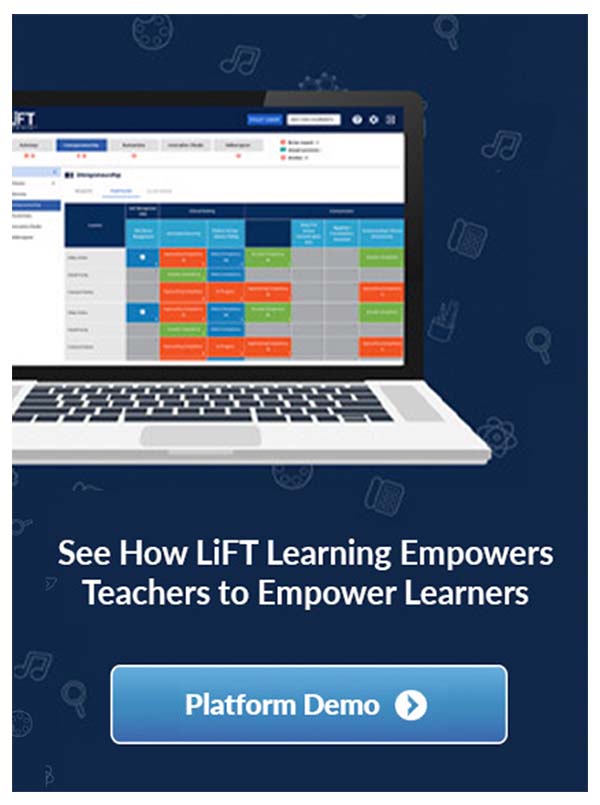The On-Ramp to Competency-based and Personalized Projects

By Josie Jordan
The On-Ramp
In our transition to CBE or personalized learning, we often go to the big picture, “How could I ever meet all the standards that way?”, or, “How could all my students be doing different things?” But going to questions like these is just like trying to merge onto the highway without building up your speed.
If you’re in the process of transitioning to competency-based or personalized learning, it’s good to remember you can build up your momentum, take it bit-by-bit as you and your learners adapt and adjust. You can do this by shrinking the change; start with just one learning progression or project.
Using the six steps below, you can structure a learning experience that can be learning-centered (built around the skills/standards) and learner-driven (structured to meet varying needs and interests). This step sequence can be used to design projects, short learning progression, or semester-long engagements so they are both competency-based and personalized.
Learning-Driven, Learner-Centered Curriculum
Make it Learning-Driven
1. Identify the skills learners need to master
Determine the grade appropriate skills that you’d like your learners to master. Focus on the skills, not the content.
Example: The ability to decipher difficult text by using decoding strategies and chunking text.
2. Create your performance tasks
Now consider your own content area and design the summative tasks which would allow your learners to demonstrate mastery of the identified skills in this context. What actions could they take in order to show mastery?
Example: Learners will annotate excerpts from Romeo & Juliet in order to interpret and comprehend meaning.
3. Find the models
Gather examples and exemplars of the correct usage of the identified skills to share with your learners and help them understand expectations.
Example: Multiple text selections that are annotated to show how they’re chunked, unknown words are circled, and definitions and connections are written in the margins.
Make it Learner-Centered
4. Design the practice activities
Think of your group of learners with their varying abilities and then plan the series of practice activities which would help all your learners prepare for your performance tasks.
Example: Practice chunking and decoding different sections of varying difficulty levels from Romeo and Juliet and other texts. Practice as a class, in groups with jigsaw chunking, and with partners.
5. Test your activities
Now take all of these tasks and activities you’ve generated and look at them as if you were the different types of learners in your class. How do they hold up? What changes do you need to make? Be sure to try each activity yourself and do each summative task.
6. Set your learners loose
Ask learners to practice the identified skills in a context or content area of their choice. Learners select the subject in which they have interest, or find relevance, and work to apply the skills they’ve gained through your practice activities and modeling.
Example: Learners bring in difficult text they encounter in their own lives as they pursue their own interests (i.e. credit card offers, directions or instructions, manuals, etc.). In class, learners use the same decoding and chunking techniques to break down the difficult text.


